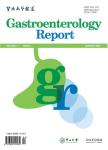State-of-the-art management of dysplastic Barrett’s esophagus
作者机构:Barrett’s Esophagus UnitDivision of Gastroenterology and HepatologyMayo ClinicRochesterMNUSA
出 版 物:《Gastroenterology Report》 (胃肠病学报道(英文))
年 卷 期:2022年第10卷第1期
页 面:195-206页
核心收录:
学科分类:1002[医学-临床医学] 100214[医学-肿瘤学] 10[医学]
基 金:Supported in part by the Freeman Foundation
主 题:Barrett’s esophagus esophageal adenocarcinoma endoscopic eradication therapy endoscopic mucosal resection endoscopic submucosal dissection
摘 要:Endoscopic eradication therapy(EET)has become a standard of care for treatment of dysplastic Barrett’s esophagus(BE)and early Barrett’s neoplasia.EET mainly consists of removal of any visible lesions via endoscopic resection and eradication of all remaining Barrett’s mucosa using endoscopic ablation.Endoscopic mucosal resection and endoscopic submucosal dissection are the two available resection techniques.After complete resection of all visible lesions,it is crucial to perform endoscopic ablation to ensure complete eradication of the remaining Barrett’s segment.Endoscopic ablation can be done either with thermal techniques,including radiofrequency ablation and argon plasma coagulation,or cryotherapy techniques.The primary end point of EET is achieving complete remission of intestinal metaplasia(CRIM)to decrease the risk of dysplastic recurrence after successful EET.After CRIM is achieved,a standardized endoscopic surveillance protocol needs to be implemented for early detection of BE recurrence.



